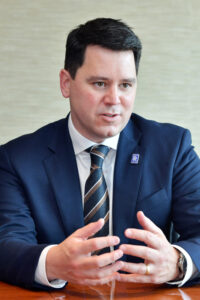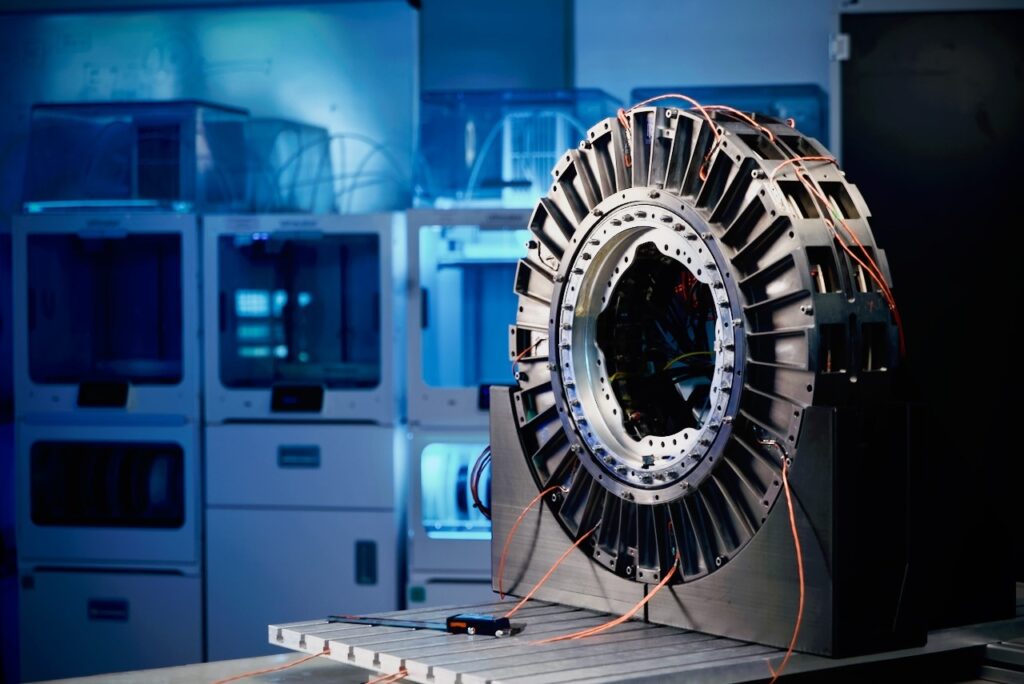Rolls-Royce: Taking the lead in advanced air mobility
…
Matheu Parr, Rolls-Royce customer director for electrical, talks to FINN editor Hazel King about the progress the company is making in developing the exciting advanced air mobility market
 Tell us a bit about Rolls-Royce’s electrical division.
Tell us a bit about Rolls-Royce’s electrical division.
We are a relatively newly formed business at Rolls-Royce, we started within an innovation hub back in 2018 and then was spun out as an individual business in 2022. We focus on investments to both support the group strategy in terms of wider electrification in aerospace but also to develop solutions for the exciting new advanced air mobility (AAM) market. We look to take a role as a power propulsion systems provider so similar scope in terms of activities to what we do in traditional aerospace.
What products are you developing?
We have spent a lot of time looking at the AAM market and understanding the various aircraft configurations that are being developed, looking to understand where the certification rules are, where we think they’re going to go and what safety levels are expected. We have focused on a technology called transverse flux, and we have released images of progress around our first transverse flux machine demonstrator, which is in our development programme to become a certified solution for the market in late 2026.
Transverse flux is a great technology for urban air mobility (UAM) because it is very torque dense at low RPMs, so as everybody wants to operate these aircraft over cities and urban environments, the noise profile of the aircraft is very critical and one of the key things you can do is to turn the propeller blades slower and reduce the noise profile. The transverse flux technology really enables us to bring that technology through to our customers, so it enables quieter aircraft.
It is an air-cooled motor so we don’t need liquid cooling systems, including radiators and pumps that increase complexity and weight. Also, because it spins at low RPM, it is direct drive which means we don’t need a gearbox either, which again reduces the weight and leads us to that key performance criteria around torque density. Removing system complexity allows us to design a more robust and reliable solution which is a key attribute that our customers are telling us they want.
We are now looking to get the UAM motor on test before year end and that will give us the performance data of exactly what torque we produce, how much power we can put through it while we operate it in an air-cooled manner – to confirm our air cooled approach is valid – and critically also start to get some data around efficiency and noise reduction as well.
The first motor will be in a lab test environment, and then the second generation will be installed onto an aircraft for flight test in 2024/2025.

Rolls-Royce’s motor technology demonstrator for urban air mobility
How is the technology influencing design of UAM aircraft?
This technology is allowing us to drive towards the certification levels that we are seeing from EASA in an overall system that is compliant with the requirements of the four- to six-seater aircraft configurations under development.
One of the other key features of the transverse flux machine is it is effectively two electrical machines in one – we call it a split lane architecture. That means one lane can go down and the other lane will still operate, so you have graceful degradation. Everything has been designed from the beginning to consider the requirements of UAM specifically and the safety levels we expect.
What other UAM projects are you working on?
It is a busy year for us this year. We have four key programmes that we’re running. We’re working on the power electronics and controls that drive the motor, and we ran that control system to TRL4 (equipment lab-based testing) in September. We’re also developing a regional air mobility motor that will support the 9-19 seat fixed wing aircraft market and we’re looking for that to be on test before year end as well. And we have also been developing a turbogenerator which is effectively a source of electricity onboard the aircraft. We delivered that to test for the first time in June and then we ran it for the first time just a few weeks ago – we tested that to idle and will be running a second test to full power before year end.
What are your predictions for the growth of the UAM market?
We are very optimistic about this market, but we probably have a more conservative view of market growth. Clearly these aircraft are already flying today – we’re already seeing Joby, Archer, Volocopter and Lilium demonstrating these aircraft, and we do expect to see aircraft starting to enter service with commercial operations around 2026. We are very conscious that the FAA talks about 2028 for the full ecosystem development, so our belief is that the market is coming in the latter half of this decade, but it will probably start in three main areas: an airport shuttle service moving people from airport to downtown; tourist flights in a very defined airspace; and medivac with the ability to bring first responders to a scene in a very quick timeframe.
We expect a pivot point in the 2030s where there is a transition into a mobility service and we start to see point-to-point connections away from just the established aircraft infrastructure. Whether that is 2030 or 2035, we have explored various scenarios, but we firmly believe that these aircraft will be flying commercially certified by the end of this decade and then we have scoped our business to manage whatever the growth rate we see in the market.
I do think there is consumer demand. In urban areas with high levels of congestion, UAM offers an alternative way of moving people around that will be considered value added and will be able to demand a premium price ticket initially, and then a reduction in that price as it becomes a more widely adopted mobility service.
How was AIRTAXI World Congress and why are these events important for the development of the sector?
It was fantastic, it was great to bring together the industry key players from the airframe industry, the propulsion systems providers, and the infrastructure and investment organisations. One of the key challenges we’re faced with is whether the infrastructure is going to scale with the development of the aircraft – are we going to be able to manage all these aircraft, who is investing in the ecosystem? AIRTAXI was a brilliant event to get everyone into a single room saying they believe in these solutions.
We’ve always said at Rolls-Royce that we’re going to have to work increasingly in partnerships to bring solutions through into this marketplace, much more than we’ve ever done historically. It is multifaceted – it’s not just the airframe and propulsion system providers who are largely well established and have a pretty defined trajectory now, it is the air traffic management, the ticketing services, the maintenance. You see established MROs at these events looking to understand their role in the market now too. It’s really exciting.
Subscribe to the FINN weekly newsletter
















